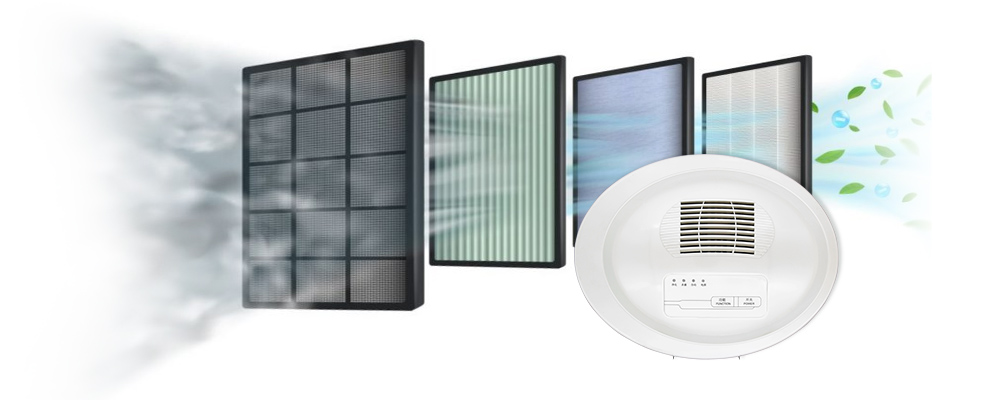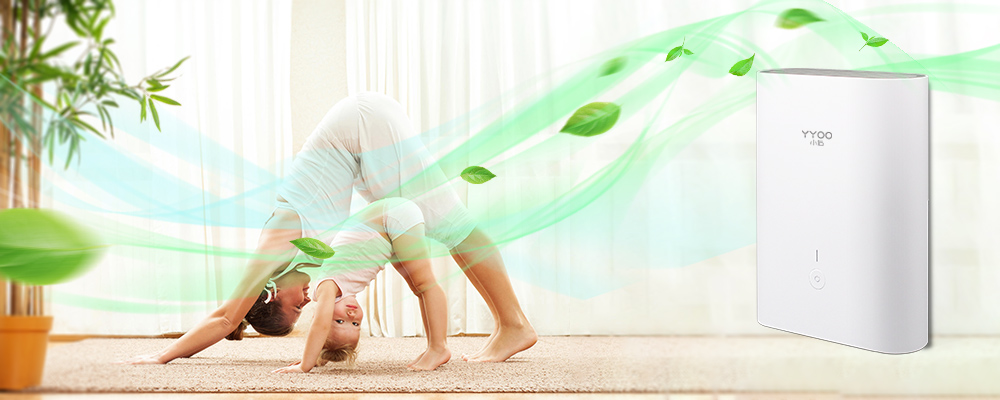Categories
New Blog
Terms You Should Know About Air Purifiers I
Air purifiers have become essential household appliances for many people today. Numerous individuals are either preparing to purchase or in the process of buying air purifiers. People seek to understand and select the right air purifier by consulting online guides and product descriptions provided by retailers. However, many articles and introductions are filled with professional terms that can be challenging to comprehend, leading to confusion. Here, we will explain some terms you may encounter when purchasing devices like air purifiers or air sterilizers, hoping to help you.
Pre-Filter:
A pre-filter is a filter in air treatment
systems, typically positioned before the main filter. It captures large
particles to extend the lifespan of the main filter and enhance system
efficiency. Pre-filters mainly work to prevent larger particles such as dust,
hair, and pet dander from entering the main filter, thereby reducing the burden
on the main filter. Pre-filters are usually easy to replace or clean,
contributing to maintaining system performance.
Activated Carbon Filter:
An activated carbon filter uses activated
carbon (also known as activated charcoal) to adsorb specific gases, chemicals,
and odors. Activated carbon filters are commonly used to eliminate volatile
organic compounds (VOCs), odors, smoke, chemical gases, and some toxic gases in
the air. This type of filter is widely applied in pet odor air purifiers,
air fresheners, and some ventilation systems.
HEPA Filter:
HEPA stands for High-Efficiency Particulate
Air. It is an effective air filter capable of capturing and filtering tiny
particles from air. To be defined as a HEPA filter, it must be designed and
manufactured according to standards to ensure it can filter out particles as
small as 0.3 micrometers under specific conditions. These particles include
dust, pollen, mould, bacteria, and viruses. There is one thing you need to care
about while choosing HEPA air purifiers. HEPA filters are classified
into different levels based on their filtering efficiency, usually identified
by numbers, with higher numbers indicating higher filtration efficiency.

Ozone:
Ozone is a molecule containing three oxygen
atoms, while ordinary oxygen molecules contain only two atoms. The additional
oxygen atom in ozone makes it highly reactive and potentially harmful to your
health.
UV Lamp:
The UV lamp in an air purifier usually
refers to a lamp that produces ultraviolet-C (UVC) light with a wavelength between
100 and 280 nanometers. This UVC light has high energy and efficiently kills
bacteria, viruses, fungi, and other microorganisms. Commonly used UV lamps include
200nm low-pressure mercury lamps, 254nm low-pressure mercury lamps, and
260-280nm UVC LEDs. However, 200nm low-pressure mercury lamps can produce ozone
when generating ultraviolet light, potentially affecting respiratory health.
Therefore, when choosing UVC light air sterilizers or HEPA air purifiers
with UVC lamps, it's essential to be aware of this.
Ionizer:
An ionizer is a component in an air
purifier that uses the principle of ionization to assist in purifying the air.
It releases charged ions, typically negative ions, to impact airborne particles
in the air. It releases negative ions that combine with airborne particles such
as dust, bacteria, and pollen, causing them to settle on surfaces and reducing
airborne particulate matter. However, ionizers have some controversies and
considerations, including the potential risk of ozone generation and the
possibility of causing allergic reactions in some individuals. Therefore, when
selecting and using ionizers, users should pay attention to the device's
design, performance, and compliance with safety standards.
Given the constraints of article length, we
will continue to explain more air purifier professional terms in our next blog
post.

Copyright © 2012-2025 Xiamen Atyou Health Technology Co., Ltd. All Rights Reserved.